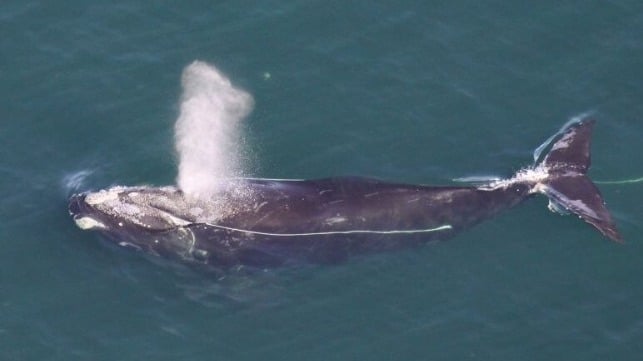North Atlantic Right Whales Die Decades Earlier Than Antarctic Cousins
New Insights on Whale Lifespans

Recent research has revealed surprising new insights into the lifespans of Southern and North Atlantic right whales. Traditionally, these majestic creatures were believed to live around 70 to 80 years. However, a study published in the journal Science Advances indicates that southern right whales can live well beyond 100 years, with some potentially reaching ages of 150. In stark contrast, North Atlantic right whales, which are critically endangered, have an average lifespan of only 22 years. This article explores the implications of these findings and the urgent need for conservation efforts.
Understanding Lifespan Differences
The new research highlights a significant difference in the lifespans of Southern and North Atlantic right whales. Southern right whales can live over 100 years, with about 10% of them possibly reaching 130 years or more. This is nearly double the previously accepted lifespan of 70 to 80 years. In contrast, North Atlantic right whales are facing a dire situation. Their average lifespan is just 22 years, and they rarely live beyond 50.
The two species are closely related, having been classified as one species just 25 years ago. This raises questions about why their lifespans differ so dramatically. The researchers attribute the shorter lifespan of North Atlantic right whales primarily to human activities. Entanglements in fishing gear and collisions with ships are the leading causes of mortality. These threats have drastically reduced their population and longevity.
The study utilized photo identification techniques to track individual whales over several decades. By analyzing the photographic records, scientists developed “survivorship curves” to estimate the probability of whales disappearing from the records as they aged. This innovative method allowed researchers to gain a clearer understanding of the potential lifespans of these magnificent creatures.
The Importance of Longevity in Conservation
Understanding the lifespans of whales is crucial for effective conservation strategies. Species with long lifespans tend to reproduce slowly, often having long intervals between births. For baleen whales, the age at which females begin breeding is closely linked to their potential lifespan. If conservation efforts do not account for these factors, they are likely to fail.
The implications of this research extend beyond just right whales. Other large whale species, such as blue, fin, and humpback whales, were also thought to have lifespans of around 80 to 90 years. However, similar to the findings for right whales, it is possible that these species also have much longer lifespans than previously believed. The historical impact of industrial whaling, which ended in the 1960s, has made it difficult to assess the ages of current whale populations. Many of the whales born after this period have not yet reached old age, leaving scientists with limited data.
As researchers continue to study whale longevity, they hope to uncover more about the life histories of these species. Understanding how long whales can live will help inform conservation strategies, especially in light of climate change and other environmental pressures.
Future Research Directions
The findings on whale longevity open up new avenues for research. Scientists are eager to explore how whaling has affected the number of older individuals in whale populations. Preliminary results suggest that it may take another 100 years for whale populations to recover fully, even for those species that are currently rebounding in numbers.
For North Atlantic right whales, the research indicates that even during periods of population growth, management actions have not been sufficient to prevent premature deaths. This highlights the need for more effective conservation measures tailored to the specific challenges faced by this critically endangered species.
